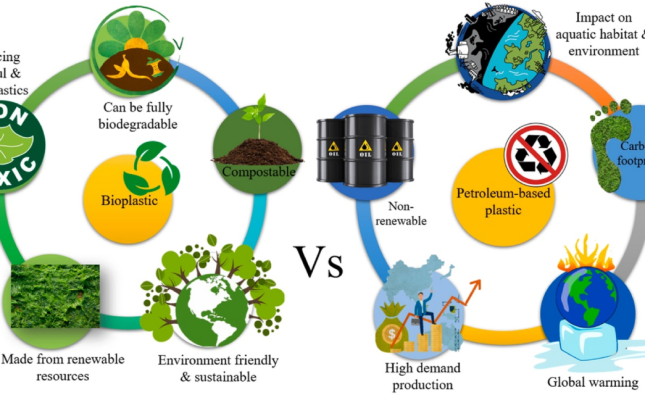
Innovation is the driving force of human progress, and when it comes to technological advancements, there are no boundaries. In recent years, Deep Tech and Synthetic Biology have emerged as two cutting-edge fields that can revolutionize our world in unimaginable ways. From developing advanced medical treatments to creating sustainable energy solutions, the fusion of these technologies has opened up endless possibilities for humanity. Are you excited to learn more? Keep reading!
Introducing Deep Tech and Synthetic Biology
Deep Tech is a term used to describe advanced technologies that are based on scientific principles and research. It includes technologies such as Artificial Intelligence (AI), Blockchain, Quantum Computing, and more. Deep Tech has the potential to solve complex problems across various industries.
On the other hand, Synthetic Biology is a field of science that combines biology and engineering principles to create new biological systems or modify existing ones. This technology offers unique opportunities for creating novel solutions for medical treatments, sustainable energy production, agriculture and much more.
The intersection between Deep Tech and Synthetic Biology can result in revolutionary outcomes that could transform the world as we know it. By harnessing these two fields’ power, researchers can develop innovative solutions that were previously unimaginable.
In recent years, there have been several notable examples of how combining these fields has led to groundbreaking discoveries. For instance, scientists have created AI algorithms capable of designing synthetic proteins with specific functions – an essential tool for developing new drugs.
Moreover, by using deep learning algorithms combined with CRISPR-Cas9 gene editing technology – one of the most promising synthetic biology tools- researchers have developed advanced methods for tackling cancer cells.
As you can see from just these few examples above – the possibilities are endless when it comes to what we can achieve through Deep Tech /Synthetic Biology fusion!
The Boundaries of Deep Tech and Synthetic Biology
The intersection of Deep Tech and Synthetic Biology has opened up exciting new possibilities for solving some of the most pressing problems in our world. However, there are still boundaries that must be navigated to fully harness the potential of this fusion.
One such boundary is ethical considerations. As we continue to blur the lines between technology and biology, questions arise about what it means to be human and where we draw the line between natural and artificial lifeforms.
Another boundary is ensuring accessibility. The cutting-edge technologies required for deep tech and synthetic biology can also come with a high price tag, making them inaccessible to many who could benefit from their solutions.
Additionally, regulatory frameworks may struggle to keep pace with rapidly advancing technologies in these fields. This can lead to uncertainty around safety protocols and standards when introducing these innovations into society.
Ultimately, navigating these boundaries will require a collaborative effort between innovators, policymakers, ethicists, and members of affected communities. By doing so responsibly and thoughtfully, we have an opportunity to push the limits of what’s possible while building a more just future for all.
The Promise of Deep Tech and Synthetic Biology
The promise of deep tech and synthetic biology lies in their ability to revolutionize various industries. For instance, the healthcare industry can benefit from the development of new drugs and therapies that target specific diseases at a molecular level.
Synthetic biology can also impact agriculture by creating plants that are resistant to pests, droughts, and other environmental stressors. This technology could lead to an increase in crop yield and alleviate food scarcity around the world.
In addition, deep tech innovations such as artificial intelligence (AI) have the potential to transform many aspects of our daily lives. AI-powered systems can help us make more informed decisions about everything from healthcare to finance.
Furthermore, these technologies offer solutions for some of the most pressing issues facing humanity today. Climate change is one example where deep tech and synthetic biology can be used together to create sustainable energy sources or reduce carbon emissions.
The promise of deep tech and synthetic biology is vast and exciting. The possibilities are endless, but it will take collaboration between scientists, entrepreneurs, policymakers and society as a whole to achieve its full potential.
The Potential of Deep Tech and Synthetic Biology
The potential of Deep Tech and Synthetic Biology is vast, and it’s only beginning to be realized. These two fields have the power to revolutionize industries such as medicine, agriculture, energy, and more.
In medicine, these technologies could lead to the development of personalized treatments based on an individual’s genetic makeup. This would improve patient outcomes while reducing costs associated with trial-and-error treatment methods.
In agriculture, synthetic biology allows for the creation of crops that are resistant to pests and require fewer resources like water or fertilizer. This could help address food shortages in areas where resources are limited.
Deep Tech also has significant potential in energy production. For example, deep learning algorithms can optimize wind turbine performance by predicting wind patterns more accurately. Meanwhile, synthetic biology research is exploring ways to create biofuels from renewable sources like algae.
The potential applications of Deep Tech and Synthetic Biology are limitless – they provide us with powerful tools for solving some of humanity’s most pressing challenges.
The Fusion of Deep Tech and Synthetic Biology
The fusion of Deep Tech and Synthetic Biology is an exciting prospect that promises to revolutionize the way we approach some of the world’s most pressing problems. By combining principles from both fields, researchers are able to create solutions that were previously unimaginable.
Deep Tech refers to technologies that rely on scientific breakthroughs and advanced engineering techniques, such as artificial intelligence and quantum computing. On the other hand, Synthetic Biology involves designing new biological systems by manipulating DNA sequences.
The combination of these two cutting-edge fields allows for a more comprehensive approach in tackling complex issues like climate change or disease outbreaks. For example, synthetic biology can be used to engineer microorganisms capable of removing pollutants from our environment while deep tech tools help understand how these organisms behave in the wild.
Another area where this fusion shows promise is medicine. Researchers are using synthetic biology techniques to design new therapies for diseases like cancer while deep tech methods help analyze large amounts of genetic data quickly and accurately.
The fusion of Deep Tech and Synthetic Biology has enormous potential for creating revolutionary solutions across multiple industries. As research continues in these areas, we can expect even more exciting discoveries on the horizon!
Conclusion
As we have seen, deep tech and synthetic biology are two groundbreaking fields that hold immense promise for revolutionizing our world. They each have unique potentials and limitations, but when combined, the possibilities are endless.
The fusion of these two fields could lead to incredible breakthroughs in medicine, energy production, environmental protection and more. It has already started to happen with the development of gene editing technologies like CRISPR which is changing how diseases are treated.
As we move forward into a future where technology plays an increasingly important role in solving global challenges, it will be crucial to continue breaking down boundaries between disciplines. By embracing interdisciplinary approaches like the fusion of deep tech and synthetic biology, we can unlock solutions that were once unimaginable.
With this combination comes great responsibility as well – ethical concerns regarding genetic modifications must always be taken into account. However if we approach these new frontiers with caution and care while still daring greatly with innovation then there is no telling what kind of revolutionary solutions await us just around the corner!










